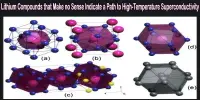Things said to as “cold as ice,” but how cold is it really? The freezing point of water is something we all learn before we leave school: 0 degrees Celsius or 32 degrees Fahrenheit if you are an American.
However, like with so many things we learn in school, it is far more complicated than we taught. Water, in fact, has a wide range of freezing points, often requiring temperatures well below 0 degrees Celsius (32 degrees Fahrenheit) to freeze.
The record for the coldest water that can still be liquid has now been broken. The expertise gathered throughout the procedure might use in a variety of fields, including organ transplantation and aeronautics.
Water still requires a nucleation site to freeze at temperatures below 0 degrees Celsius (32 degrees Fahrenheit). Because very pure, still water lacks nucleation sites, it may be chilled to temperatures well below 0 degrees Celsius (32 degrees Fahrenheit) without freezing, a common demonstration for those wishing to demonstrate that the world is a complicated place. However, if it gets cold enough, even purity will not keep water from freezing.
The parameters that govern whether supercooled water freezes have been studied by Dr. Hadi Ghasemi of the University of Houston. In the process, Ghasemi and colleagues published a paper in Nature Communications announcing that they had broken the world record for the coldest liquid water, which was -44 degrees Celsius (-47 degrees Fahrenheit). This is 6 degrees Celsius (11 degrees Fahrenheit) cooler than the previous high.
The water drops used by Gahsemi to achieve the new record were far too tiny to observe, measuring only a few nanometers in diameter. “Experimental exploration of the freezing temperature of a few nanometer water droplets has remained an unsolved difficulty.” We were able to explore the freezing of water droplets from the micron-scale down to the 2-nanometer scale using newly developed metrologies,” Ghasemi said in a statement. The issue, according to the article, is that little water droplets are more likely to evaporate or cluster together, making them difficult to investigate individually.
“We discovered that when a water droplet comes into touch with a soft interface, the freezing temperature is substantially lower than when it comes into contact with hard surfaces,” Ghasemi added.
The researchers placed droplets of various sizes in aluminum oxide membrane holes that were covered by oil and found significant changes in the freezing point between 10 and 2 nanometers (0.00000004-0.0000004 inches). The membrane walls worked as nucleation sites in the absence of oil, and the droplets froze at zero oC (32 oF) or near to it. The lack of a firm surface, along with the pressure from the oil, kept the drips liquid.
According to a previous study, crystalline ice requires at least 275 molecules to form from liquid water. Droplets smaller than 2 nanometers in diameter lack the molecules necessary to form ice crystals, and nucleation temperatures of -183 to -158 oC (-297 to -252 oF) have been discovered, however, anything so tiny is not necessarily deemed liquid.
The flexibility of water’s freezing point has real-world implications. When faced with the issue of surviving frigid winters, some animals create their own anti-freeze compounds or use food as a source of heat.
Others, on the other hand, allow themselves to freeze on their own terms so that their cells do not shatter when ice crystals develop within. Wood frogs are experts at this technique, although it is unclear how they accomplish it. Successful mimicking might allow hospitals to freeze organs rather than perform transplants under time constraints, or regulate the development of ice on aircraft wings. Even if we do not chill water to such low temperatures ourselves, understanding how it happens can help with cloud formation models and, as a result, weather and climate forecasts.
















